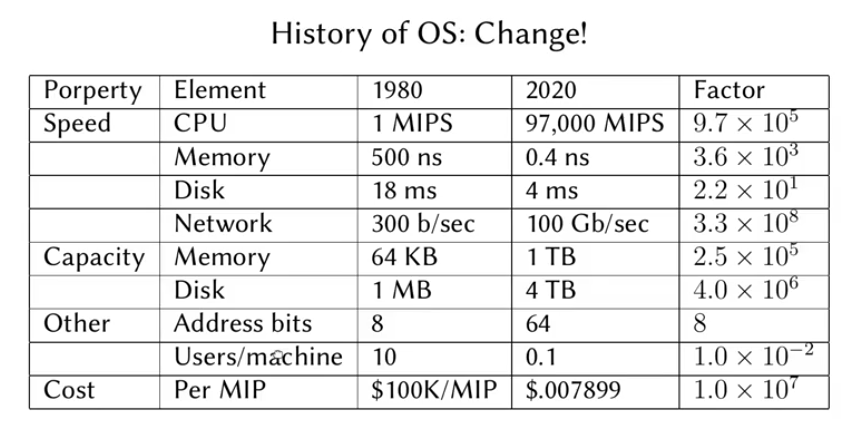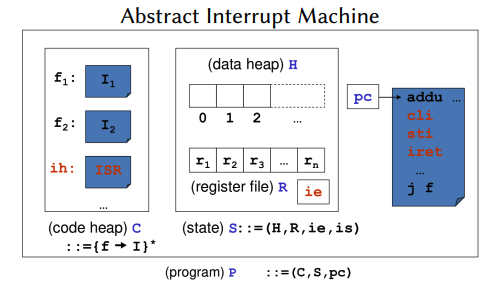01 - AOS Overview
Reading Critiques
- Addressing followings:
- Summary of major innovations
- What the problems the paper mentioned
- How about the important related work/papers
- What are some intriguing aspects of the paper
- How to test/compare/analyze the results
- How can the research improved
- If you write this paper, then how would you do?
- Results from this paper
- Give the survey paper list in the same research area
- One Project
- JOS
- ReadingList of OS
- find a interesting research topic/project
- Analysis/parctice deeply
importance knobs how to add compared knobs or not adding new.
Rethinking OS Components

Single-machine OS/VMM:
Strategy
how to organize OS for development/evolution/performance/security
how to use multi-processor machines
Components
- Mem management
- Process management
- Synchronization
- File systems & device support
Mem management:
- Purposes
- Virtual memory
- Swapping: moves #p to disks
- Paging: #p runs only the active pages in mem
- Buffer Cache
- Strategy
- how to share mem with multi-machines
- how to simplify mem management as mem becomes abundant
Process management:
- Purposes
- 多 #p 并发执行
- context switching: Interrupt
- Strategy
- Achive fairness/throughput/responsiveness
- Reduce/avoid the cost
Synchronization:
- Purposes
- 联系 #p,如在 context switching 阶段需要coordinating threads
- Strategy
- Atomic actions
- Mutual exclusion:critical region一个时刻一个 thread 执行
- Semephores: atomic, counter-based locks
- Avoid Deadlock
File Systems:
- Purposes
- File: data+attributes
- File services. E.g. Naming, Access,
chmod
- Strategy
- 多机间共同运行 File systems
- 多机间 copy 时 provide consistency/availability/reliability
- How to handle large data sets
I/O systems:
Purposes:
- 速度慢于memory
- Caching
Strategy:
- 多机间能有共同 share 的 resources 来提高性能
- handle new devices with new characteristics
I’d like to challenge this!
Performance
如何利用 Multi-core 性能: E.g. AMD 64cores & Intel 48 cores
Benchmark: Speedup / throughout /
Kernel synchronizations protecting the shared data are the main bottlenecks on multi-core platform
Reliability
Includes availability/security/fault tolerance/durability
Make sure data services when system crashes, disk crashed , etc
Threat Analysis
- Protect what, why?
- What are the vulnerabilities of those assets
- Who might exploit vulnerabilities
- How to prevent a specific threat
- Consider cost
Correctness & Summary

本博客所有文章除特别声明外,均采用 CC BY-NC-SA 4.0 许可协议。转载请注明来自 Sicilienne!
评论
Valine# ValineDisqus

